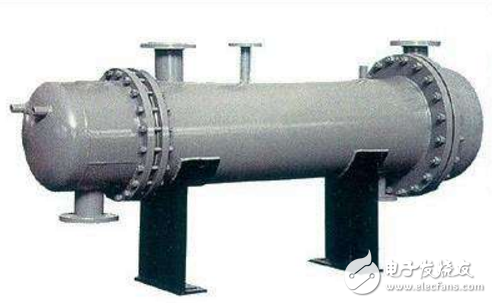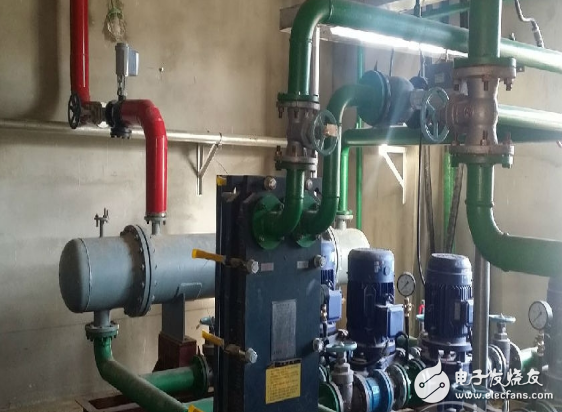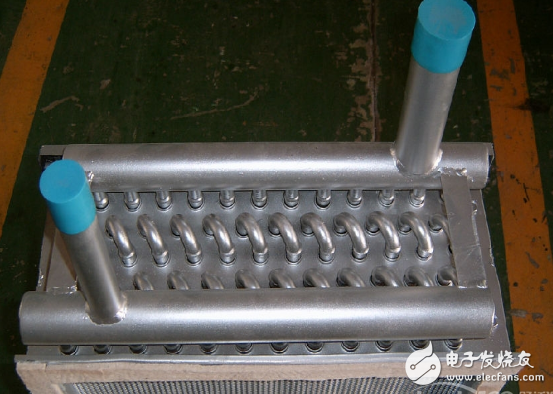The steam heat exchanger is an efficient device that can fully utilize the heat from steam to warm up air. This heated air can then be directed to various drying and processing equipment, making it a key component in modern industrial systems. Steam has become a preferred heat carrier due to its wide range of applications and effectiveness.
**First, the structure of the steam heat exchanger**
The main heat transfer element in a steam heat exchanger is the steel-aluminum composite finned tube. Thanks to advanced manufacturing techniques, the thermal resistance between the steel and aluminum is minimal—less than 210 degrees. The combination of the steel pipe's pressure resistance and the aluminum’s high thermal conductivity ensures excellent heat transfer performance. It also prevents direct contact between the steel and air, significantly improving corrosion resistance. The fins are smooth and free of wrinkles, which reduces air resistance compared to traditional winding types. Additionally, this design offers easy cleaning, a compact structure, and a large heat transfer area.

A steam heat exchanger is essentially a tube-and-fin system designed to enhance heat transfer efficiency while maintaining a compact and space-saving structure.
**Second, the working principle of the steam heat exchanger**
The working mechanism involves steam entering the core and being sprayed at high speed along the side wall toward a small hole. This kinetic energy helps absorb water and push it along the edge of the core in a tangential direction. As it comes into contact with the casing wall at a large angle, the water rotates due to the blockage. The housing design ensures a stable and suitable rotation speed, allowing the water flow to better absorb the steam's energy, reduce noise, and disperse the steam into tiny bubbles. This minimizes the noise generated, keeping the overall sound level around 50 dB. The rotating hot water is pushed by centrifugal force against the casing walls, then exits through the upper and lower holes, maintaining a certain angular velocity that helps mix the surrounding water. This leads to more uniform heating. After exiting, a negative pressure is created inside the casing, drawing in cold water from outside. This cycle continues, effectively heating the water in the tank.

**Fourth, the main advantages of steam heat exchangers:**
1. High efficiency and energy-saving: Thermal efficiency can reach up to 99%. Steam is directly dissolved into the water, even with a low pressure difference (as low as 0.04 MPa), ensuring minimal heat loss and high efficiency.
2. High hot water temperature: Using a vortex heater, the maximum temperature can reach 98°C for open containers and up to 150°C for pressurized vessels. The maximum operating pressure is 1.6 MPa.
3. Low vibration and noise: Designed with internal noise-reduction structures, the noise level is under 50 dB, significantly reducing vibrations and improving the environment.
4. Lower initial investment: Direct steam injection into the water tank eliminates the need for additional pumps and reduces capital costs.
5. Easy operation and maintenance: Water and steam are controlled separately, allowing repeated heating and easier temperature regulation.
6. Durable construction: Made entirely of stainless steel, it requires no disassembly or frequent maintenance, offering a long service life.
**5. Installation and usage instructions for the steam heat exchanger:**
1. The unit connects via standard flanges and can be installed in parallel across multiple stages. It should be placed in the geometric center of the container, ideally 200 mm above the bottom and at least 200 mm away from the sides.
2. The vortex muffler heater is connected to the steam line using flanges. Ensure the steam pipe is securely fastened and positioned without movement. When multiple units are used, they should be evenly arranged.
3. If there are debris in the steam pipe, such as welding slag or rust, install a filter to prevent nozzle clogging.
4. For installation in a water tank, use a YWQ type temperature and liquid level controller to manage water temperature and level effectively.
5. When selecting the model, ensure the pipeline diameter is equal to or larger than the nominal size of the heat exchanger. For multiple units, the total cross-sectional area of the steam pipes must be sufficient.
6. A check valve must be installed near the heater on the steam line to prevent siphoning and water backflow when steam is turned off.
Nordy Dry specializes in the production of steam heat exchangers and radiators. With strong technical capabilities, advanced equipment, and comprehensive testing, our factory focuses on producing steam heaters, condensers, mixers, and dryers. We have built a solid reputation over the years by adhering to the philosophy of “customer satisfaction is our goal†and “quality first, reasonable price, timely delivery, and excellent service.†We are committed to research and development in chemical machinery for industries such as chemicals, food, biotechnology, and pharmaceuticals, achieving great market success and gaining consistent user trust.
**6. What are the direct heat exchange systems for steam heat exchangers?**
Direct heat exchange systems for steam heat exchangers include several types. The first is the steam-heated ejector system, which operates at a certain pressure, is simple in design, cost-effective, and has a high heat utilization rate with minimal scaling. However, steam mixers are rarely used today due to potential damage to heating and air conditioning systems. Spray heat exchangers work well under low-pressure steam conditions but require careful attention to water quality to avoid clogging of spray nozzles. Thermal sensing heat exchangers offer stable operation, automation, and ease of use, with a low installation cost and convenient control.

Hybrid Light Tower
Hybrid light tower
A hybrid light tower is a type of lighting system that combines traditional lighting technologies, such as high-intensity discharge (HID) lamps, with renewable energy sources, such as solar panels and wind turbines. This combination allows the light tower to operate independently of the electrical grid, making it a more sustainable and cost-effective lighting solution.
The hybrid light tower typically consists of a tall tower structure with multiple light fixtures mounted at the top. The tower is equipped with solar panels and/or wind turbines, which generate electricity from the sun and wind. This electricity is stored in batteries or used directly to power the light fixtures.
During the day, the solar panels collect sunlight and convert it into electricity, which is stored in batteries for use during the night or in cloudy conditions. The wind turbines generate electricity when there is sufficient wind, further contributing to the power supply.
Hybrid
light tower is an advanced lighting tower, it can save 40% fuel, save maintenance,
save labor. It operates from the latest solar and battery combination, backed
up by a small fuel-efficient diesel engine. Utilizing latest, hybrid
technology, provide less consumed power than traditional towers for huge fuel
savings and reduced COâ‚‚ output.
Hybrid Light Tower,Hybrid Solar Mobile Light Tower,Hybrid Solar Light Tower,Solar Mobile Light Tower
Grandwatt Electric Corp. , https://www.grandwattelectric.com